Top 13 Types of Influencers (Categorized by Niche & Size)
We live in a world of creator economy ruled by influencers with highly engaged audiences.
If you want to take advantage of their audiences to increase your conversions or brand awareness, you have arrived at the right place.
In this guide, we will list thirteen types of social media influencers based on their size and niche and explain the intricacies of each to you.As a relevant continuation to this guide, you can check out our intro to digital marketing and, if you are marketing a software product, our SaaS marketing guide.
What is Influencer Marketing?
Influencer marketing is the process of collaborating with social media influencers to promote your products and services.
Influencers are usually experts in their fields and enjoy a high level of trust. Their opinion serves as social proof of your product’s quality in the eyes of their followers, which means that if they endorse a product or review it, the chances are high that it will sway their audience towards purchasing it.
Thanks to this level of effectiveness and relevance, influencer marketing is on the rise, with a market size of $13.8 billion in 2021 and a steady growth rate, as evident from the statistic below.
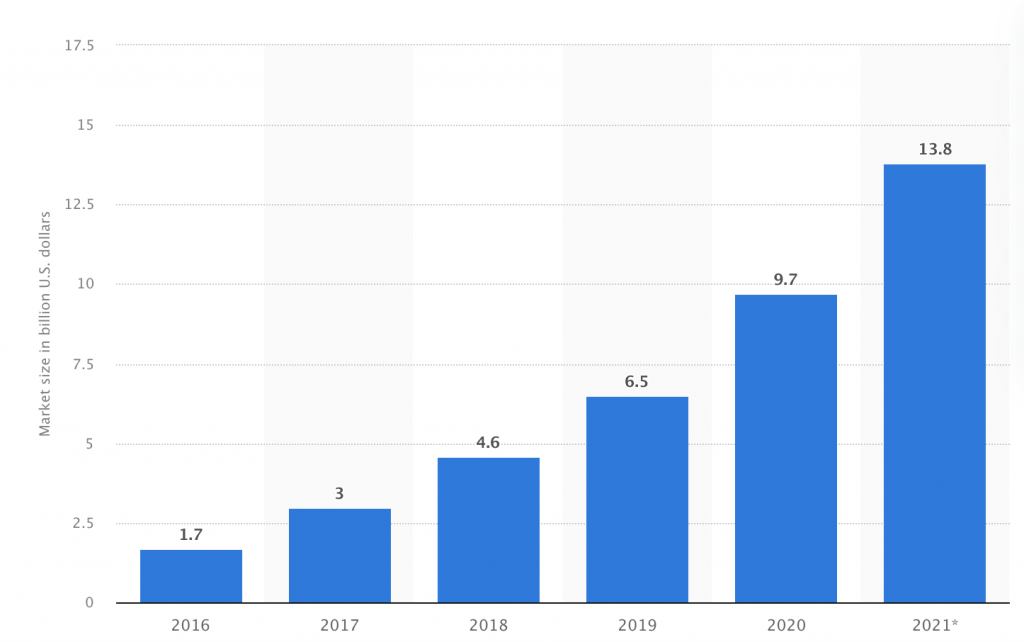
And the great news is that doing an influencer marketing campaign is relatively easy. Here are the three main activities you need to do as part of your influencer marketing strategy:
- Determine your goals. Have a clear understanding of what you want to get from your collaboration with influencers (e.g., increase brand awareness or drive the sales of a specific product)
- Create your influencer shortlist. Here, you need to consider their niche. Your best choice would be influencers with the most relevant audience for your products and services (e.g., camping influencers for your tents and air mattresses).
- Collaborate with influencers for best quality content.Your task is to make sure that your products are well-represented, while the influencer ensures that your promotion looks compelling and relevant in their content. Thus, you need to collaborate closely during the content creation process.
Overall, influencer marketing is an effective way to reach out to relevant audiences. But targeting is not its only benefit. We have three more reasons why influencer marketing is a great idea for you.
3 Reasons Why Influencers are Good for Marketing
Gone are the days when digital marketing was only about banner ads and paid search. While these approaches are still relevant, there are other highly-effective ways to gain the interest of your target audience.
Influencer marketing is one of them, and here are a couple of facts to support its case:
- People spend over 2.5 hours a day on social media platforms.
- The recommendations of influencers sound trustworthy to around 61% of buyers.
- The average ROI on the budget spent on influencer marketing is around 510%.
Now let’s study the benefits of influencer marketing more closely with these three examples.
Reason #1: They increase brand awareness
Influencer marketing can be your go-to option when it comes to letting the world know about yourself and your brand. In fact, digital marketing experts cite increasing brand awareness as their most common goal for implementing an influencer marketing strategy.
It is the nature of influencer marketing itself and the specificity of content and audience of these influencers that help you get a significant boost in your brand awareness. In particular:
- Influencers have lots of followers. Sometimes we speak about millions or tens of millions. With a single post or video, or mention of your brand by the influencer, you can reach this many people at the same time.
- High engagement rate. As influencers create compelling content about their niche and have an audience with interests relevant to that niche, the engagement rate is quite high. Their subscribers actively like, comment, discuss and follow the influencer’s recommendations.
- Content published on multiple channels. It is common for influencers to have accounts on multiple platforms and do promotions on all of them at the same time. Thus, with an influencer partnership, you can get your products promoted on several social media channels simultaneously.
Depending on your eventual goal, you can either go for non-niche general influencers with millions of followers (if you want more impressions) or small influencers specializing in one niche (if you want more engagement).
Reason #2: They make you trustworthy
Trust is probably the best superpower of influencers, especially those operating in a single niche. According to a report by Musefind, more than 90% of consumers have more trust in influencers than celebrities or ads.
But why do people trust influencers more than anybody else? There are many reasons behind it, but these are the main two.
Influencers are experts in their field. These people are experienced in their niche. When they like or dislike a product, they usually bring up convincing arguments that defend their case thanks to their knowledge and expertise. Thus, people trust their opinion about a product.
Influencer reviews are usually honest and unbiased. Many influencers will refuse to praise your product if it is not a good one. This is especially true for their review videos, as the whole meaning of this type of content is in their balanced and seemingly unbiased opinion. This fact also gives their content an extra boost in trustworthiness.
Reason #3: They connect you with younger audiences
Marketing your products through influencers is a great way to reach younger audiences, and here are two statistics proving it.
- Influencers impact 90% of the purchase decisions of young adults.
- More than 60% of teens follow influencers.
Building your brand’s presence on social media (to learn more, check out our guides on SMM vs. traditional marketing and its costs) or having your own app (you can also check the app design cost) would help you reach younger audiences. But the effectiveness of these two will not be comparable to partnering up with influencers and promoting your products through them, considering the level of impact influencer opinions have on the younger audience.
Now, you have a list of convincing reasons to add influencer marketing to your stack. But let’s help you understand different types of influencers by size and niche before you can start collaborating with them.
4 Types of Influencers Based on Amount of Followers
Yes, there is a good reason why we are separating influencers by their number of followers.
Influencers have different characteristics depending on how large their audience is. Some of these characteristics include:
- The prices they charge for promotion.
- The engagement level of their audience.
- The amount of reach you can get with them.
Now let’s go ahead and take a more thorough look at each type by follower count and understand the use cases for collaborating with each of them.
Type #1: Nano-influencers
Nano-influencers are a growing group of content creators that have gathered between 1K and 10K subscribers.
These are usually regular people with high enthusiasm for a specific topic like camping or fashion, and they are open to sharing their thoughts, experiences, and opinions about their passion on social media.
Engagement: Nano-influencers enjoy the highest level of engagement among the rest. As their audience is small and they personally know many of their followers, their posts are full of comments, discussions with the author, and more.
Prices: As creators with a small following, they do not charge much for their posts. You can expect to pay around $10-$100 for a single nano influencer post.
Example Influencer: We have Harriet and her Instagram channel @hxrrietday with 10k followers.
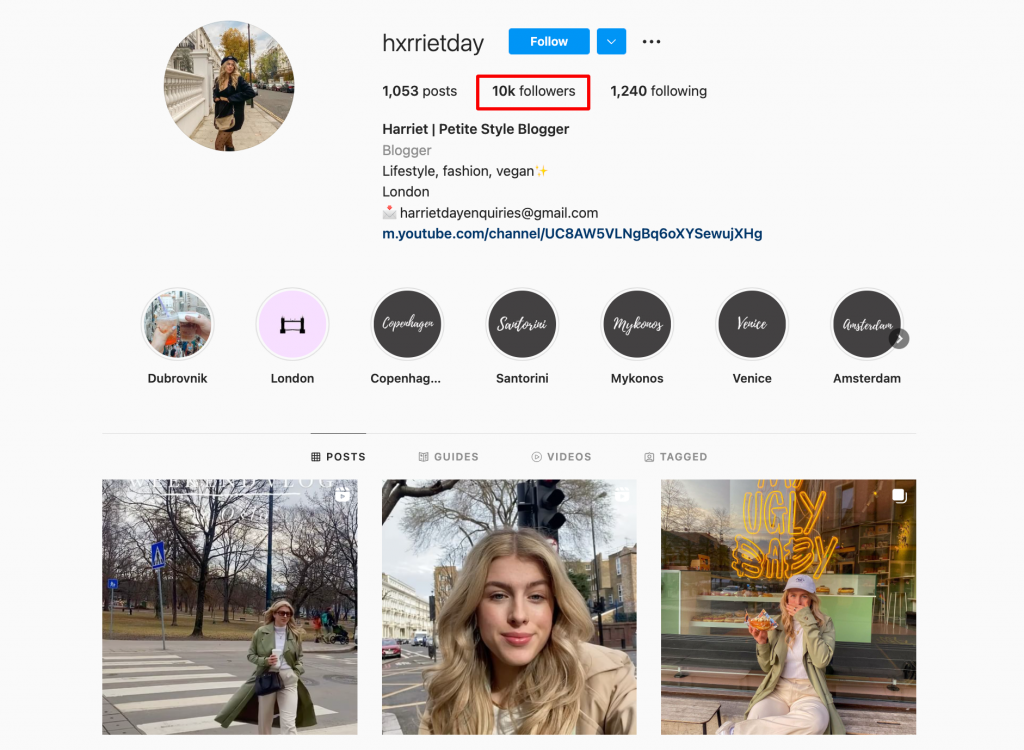
Harriet’s content is about fashion, with her posts featuring various outfits, as well as lifestyle, with her reviews of shopping experiences and restaurants.
Best use case: Doing Instagram influencer marketing with a nano-influencer like Harriet is best if you are a small brand with a limited marketing budget and need a cost-effective option.
You should also consider nano-influencers if your primary goal is generating leads or getting product feedback, and you want to work with a highly-engaged audience.
Type #2: Micro-influencers
Micro-influencers have a slightly larger audience. You can expect them to have somewhere between 10K and 100K followers.
These are usually experts in their niche with lots of knowledge and experience. Thanks to this, they have gathered a sizable following of people who want to learn from them or get inspired by their content.
Engagement: The level of engagement for micro-influencer posts is high, but it is relatively lower than what you can get with nano-influencers. Nevertheless, as they are niche players, their audience is usually highly interested in their content.
Prices: An average post can cost between $100 and $5,000, depending on the subscriber count and the engagement rate.
Example Influencer: The micro-influencer we want to highlight is Jenn and her @hellorigby Instagram channel.
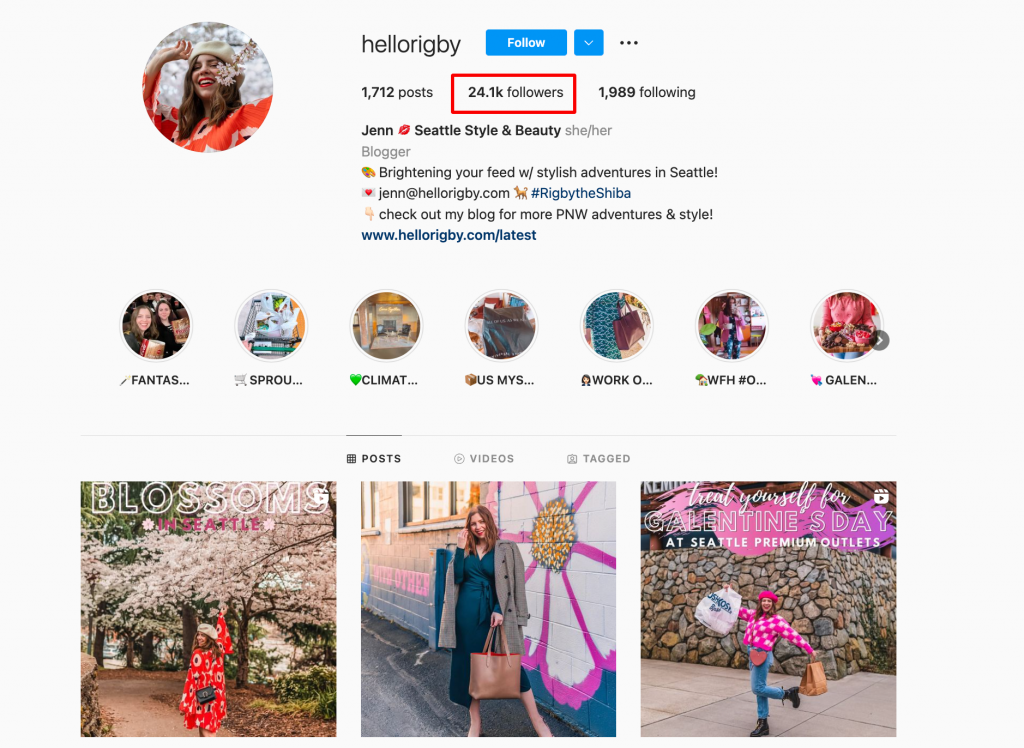
Jenn’s channel has around 24,000 followers and specializes in beauty and fashion. She features outfits and looks for different occasions (such as going to work or dinner date) and seasons (spring or winter looks).
Best use case: As micro-influencers have more followers but retain a relatively high level of engagement, they are best for generating leads by marketing your landing or product pages.
Type #3: Macro-influencers
Macro-influencers are already getting into the celebrity area with 100K-1M followers.
Here, we have internet celebrities who have succeeded in their craft and built a considerable following of fans and sympathizers. Macro-influencers are usually bloggers, vloggers, podcast hosts, or niche experts.
Engagement: With an audience of this size, the engagement rate is average. If they specialize in a specific niche, you can expect slightly more engagement compared to generic celebrity macro-influencers.
Prices: Be ready to pay between $5,000 and $10,000 to a macro-influencer to promote your brand in a single post.
Example Influencer: We would like to introduce you to Lily Pebbles, who runs a channel with 430,000 followers on Instagram.
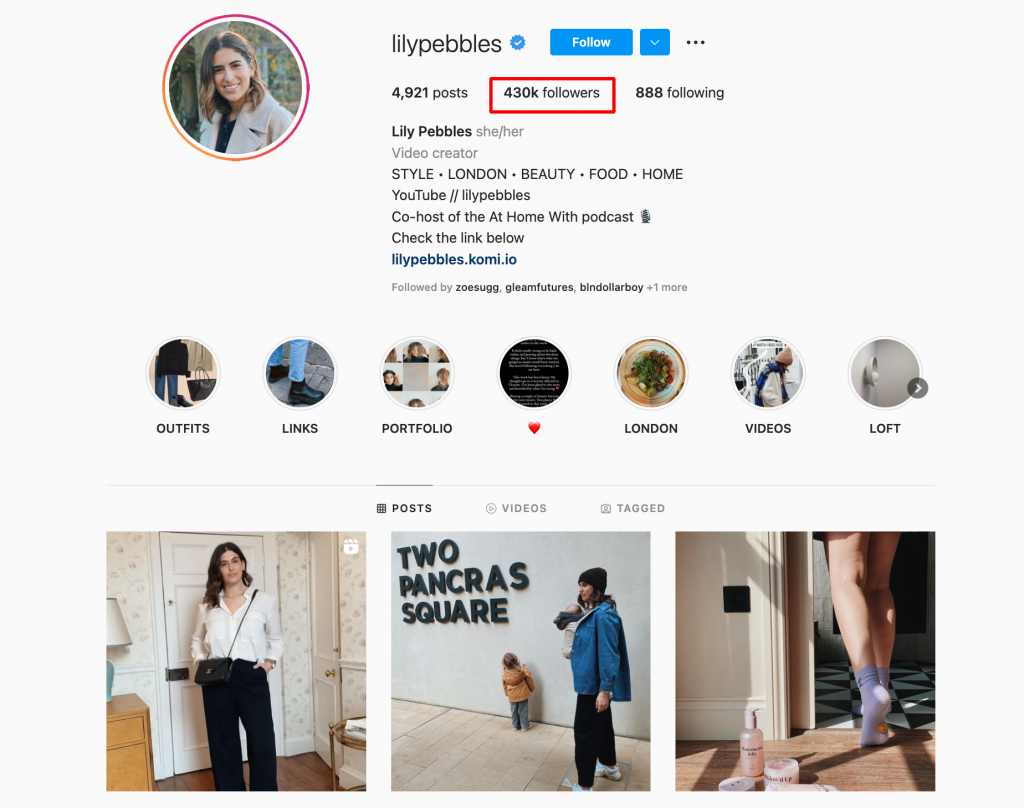
Unlike the previous example, Lily’s channel is not niche. She posts high-quality content on everything from home decoration and lifestyle to fashion and food. This type of diversification is common among internet celebrities who want to reach a wider audience.
Best use case: As macro-influencers cannot get you the level of engagement you could enjoy with the previous two types, you can still take advantage of their audience size. In particular, macro-influencers are a great choice if you want to increase your brand awareness.
Type #4: Mega-influencers
We have reached the social media stars – people who can have millions or tens of millions of followers.
These people have a massive fan base, and each of their posts becomes an instant hit with hundreds of thousands or even millions of impressions.
Engagement: As you would expect, the audience of mega-influencers is so massive and diverse that you cannot expect any decent engagement. But they are making up for it with the number of people a single post can reach.
Prices: With millions of followers, they are in a position of charging from ten thousand to several hundred thousand dollars per post.
Example Influencer: Our highlight is Instagram lifestyle celebrity Zoȅ Sugg.
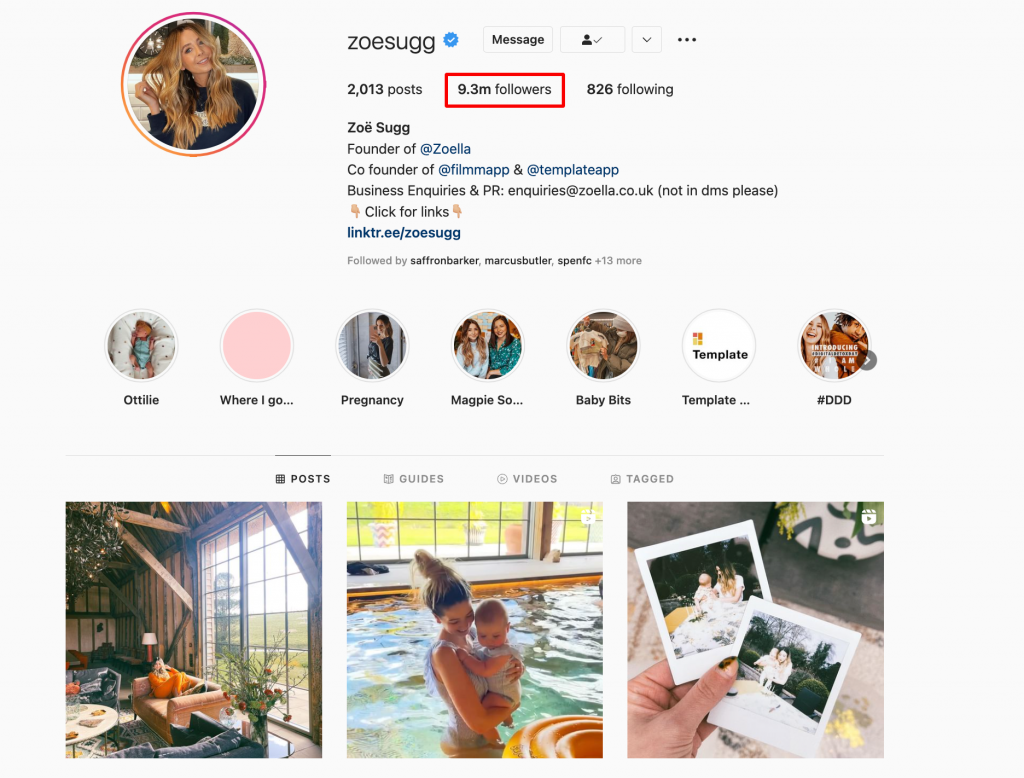
Her channel has 9.3 million followers and more than 2,000 posts. As is common with celebrity influencers, she does not specialize in a specific niche (although niche influencers can get millions of followers too) and shares posts about her wardrobe, shopping, food, and more.
Best use case: Only larger companies with significant budgets can afford to collaborate with mega-influencers and celebrities and make them their brand ambassadors. Considering their wide audience/demographics and poor engagement rate, the main reason to hire them to promote your products is to increase brand awareness.
To conclude, depending on the influencers’ size, they can serve either your lead generation or brand awareness goals.
But size is not the only differentiator. Most influencers specialize in a single topic or niche. Coming up next is our selection of influencers by niche.
9 Types of Influencers Based on Their Niche
Some of the influencers out there, like celebrities, have generic audiences with diverse interests. They can help you reach the masses, but they often don’t deliver the level of targeting and relevance that you can get with niche influencers.
By creating content about a specific topic, niche influencers amass a subscriber base that is highly engaged and interested in that topic.
Therefore, if you have a product or service that fits the niche your partner influencers are operating in (for instance, you sell skis and your influencers are winter sports enthusiasts), the chances are high that their audience will come and purchase your goods.
Now let’s take a look at some of the most engaged and active niches out there and illustrate their cases with real influencers.
Type #1: Fitness influencers
The wellness industry is a massive one, with $1.5 trillion in revenues in 2021 alone and a projected growth rate of 5-10% per annum. The reason the wellness market is this big is the fact that everybody is becoming more health-conscious and worried about the state of their health, both mental, and physical.
With a market this size, it is natural to see how the health and fitness influencers are thriving and gathering a large following. These influencers inspire and teach their audience everything from healthy diets and workout planning to yoga and weight loss.
As a great example of this niche, below we have Kayla Itsines, who’s a mega influencer specializing in sports and fitness.
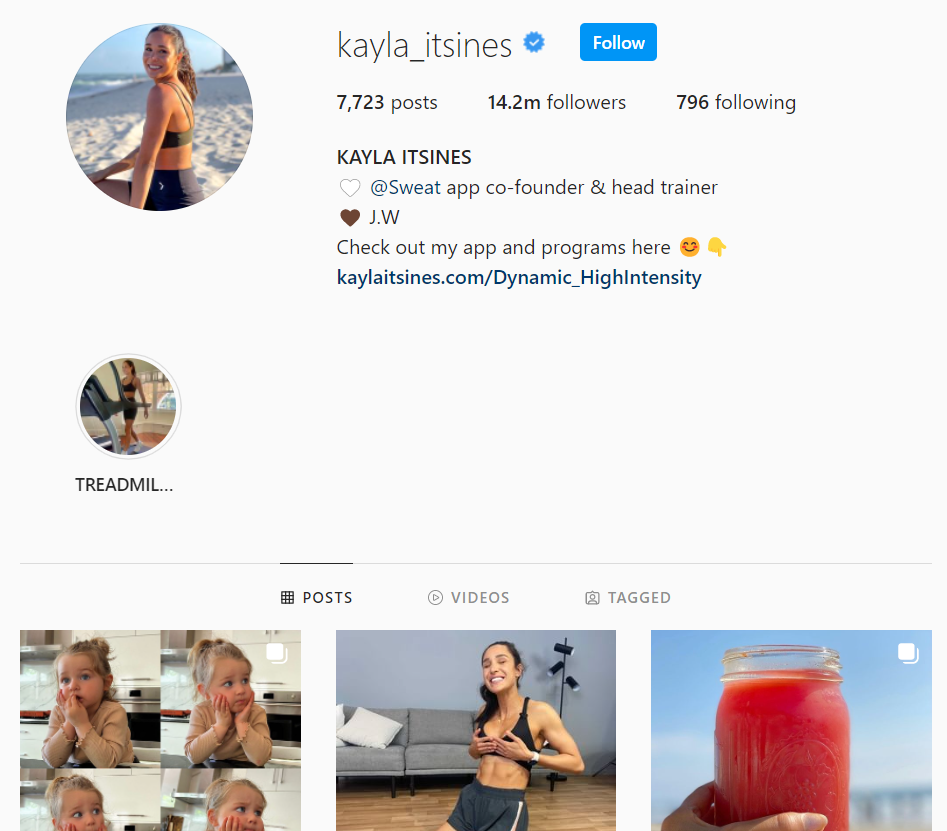
Kayla is a professional trainer from Australia who has been on the fitness scene for a while and has gathered a large audience of over 14 million fitness lovers.
She is famous for her Bikini Body Guide program and often posts before/after photos of people who have successfully built their physique thanks to that program.
Type #2: Gaming influencers
Gaming has been a booming industry for quite a while. But, thanks to the pandemic, it started growing even quicker, with a 27% increase in 2020.
And other than just playing games, the industry loves to create lots of influencer content about gaming, including:
- Tutorials and walkthroughs, where influencers record the game they are playing and show their audience how to complete specific missions or the entire game.
- Game reviews, where experienced gamers play the game and review it based on criteria like storytelling, action, gameplay, and more.
- Online matches and live streams, where they simply play an online game with their peers and stream out the whole process on platforms like YouTube and Twitch.
Gaming influencers usually prefer YouTube to Instagram (sometimes also TikTok) as their content is mostly videos. One of these influencers is Markiplier.
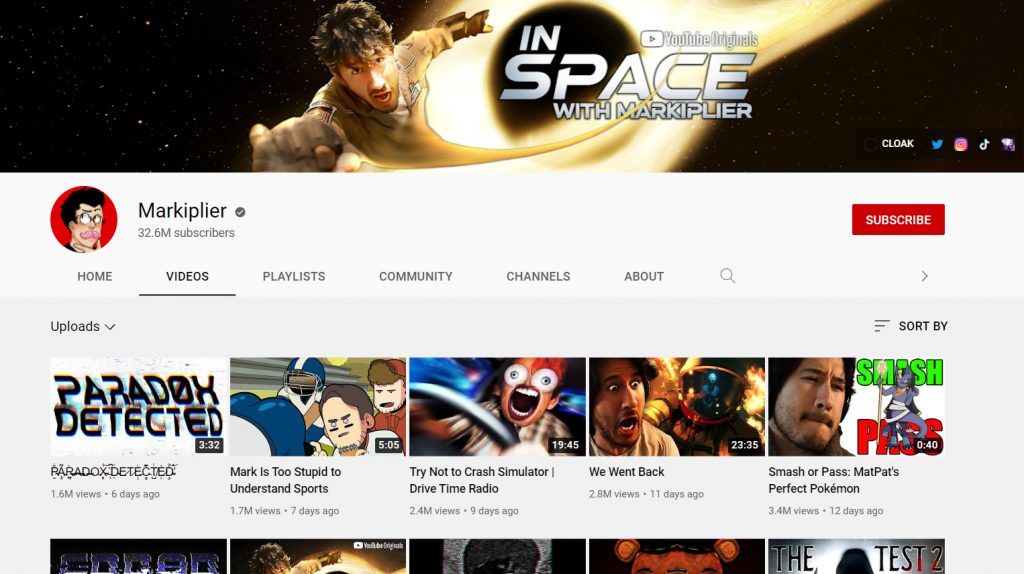
His real name is Mark Fischbach. He is a California-based professional gamer and game streamer with around 32 million subscribers on his YouTube channel.
Markiplier is famous for his “let’s play” series of videos where he plays a game from the beginning to the end and comments on his experiences and opinions about it along the journey.
Type #3: Lifestyle influencers
With this niche, we are looking at the content that inspires to make your life full of colors as lifestyle influencers create content about restaurants, shopping, holiday destinations, and more.
People like to follow lifestyle influencers to either dream, get inspired, or find a great location to shop or eat. Our highlight – Lauren Conrad is one of these Instagram influencers.
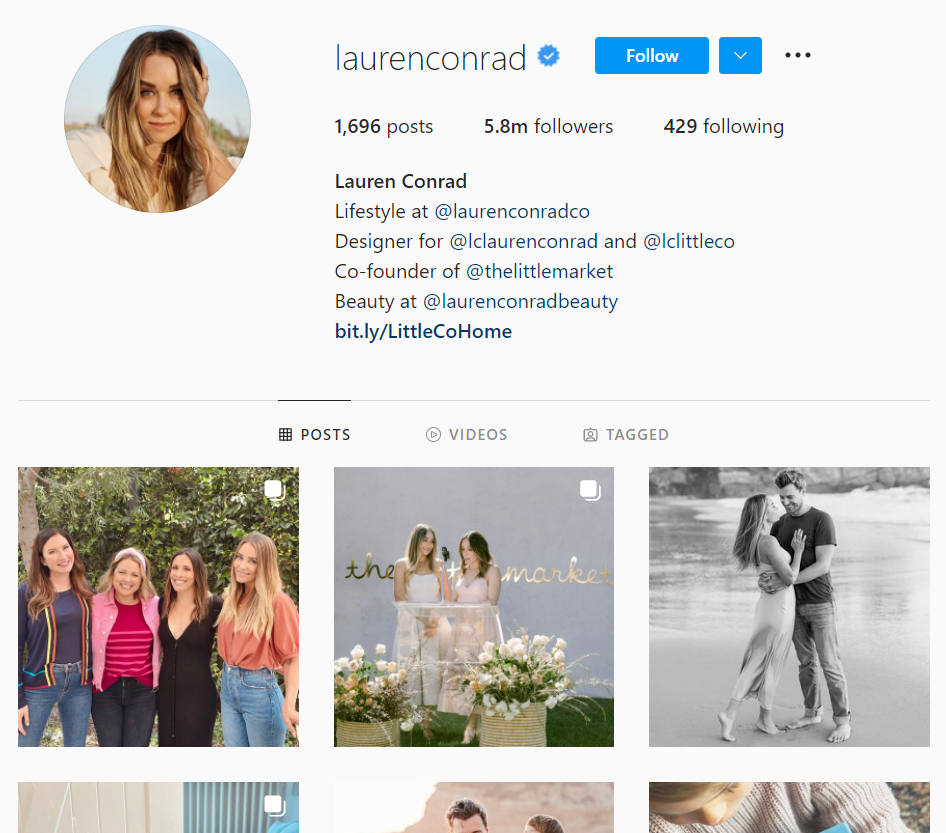
Lauren lives an interesting life and shares it with her 5.8 million followers. On her Instagram page, you can find everything from her dining experiences to travels, time with family, shopping, and more.
Type #4: Food influencers
You love food, don’t you? Well, all of us do, and many of us also love following creators on YouTube and Instagram that have compelling content about it.
The content that food influencers create can vary. Some examples are:
- Cooking, where the creator teaches you how to cook and shares various tips and tricks with you.
- Food reviews, where influencers visit various restaurants, eat and review their food.
- Food travel, when they travel the world and try local cuisines of different nations.
There is also the sub-niche of healthy food and cooking, and Daphne Goh as its representative.
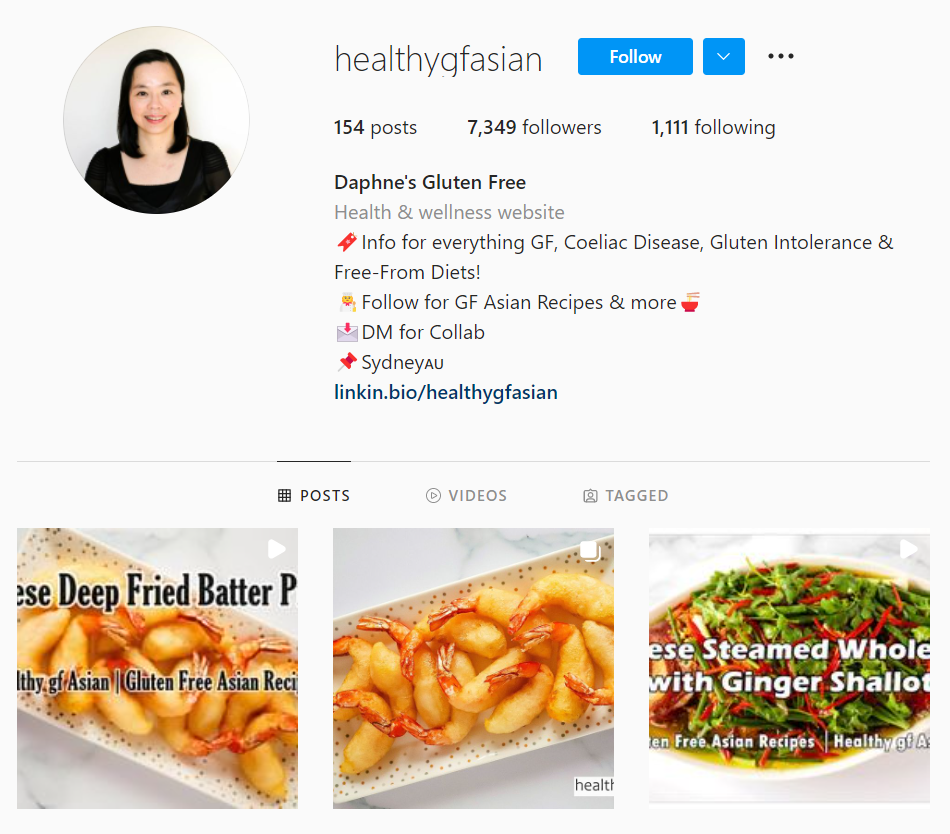
Daphne, a Malaysian nano-influencer living in Australia, runs a channel called Healthygfasian that specializes in food for people with gluten-related health issues. In this channel, we can find cooking videos of gluten-free dishes as well as tips on eating healthy.
Type #5: Business & investing influencers
In the past, if you wanted to learn to manage your finances or start investing, you would either need to visit the library and read lots of books on finance or consult a financial advisor.
Nowadays, this process has become much easier thanks to specialized blogs, YouTube, and Instagram channels.
The influencers in this niche will have all kinds of financial content, from tutorials on doing your taxes or getting rid of your credit card debt to advice on investing and building passive income sources.
Our next hero belongs to this niche. Her name is Delyanne Barros, and she is an investment coach.
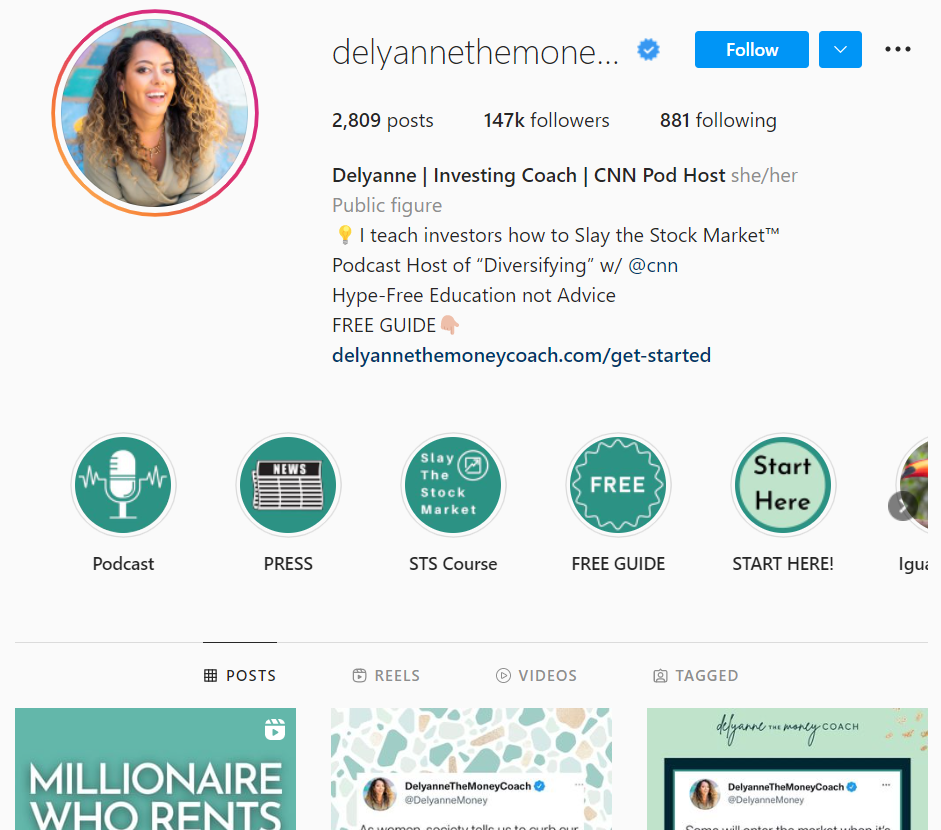
Delyanne belongs to the macro-influencer class with almost 150,000 Instagram followers.
In her channel DelyanneTheMoneyCoach, she provides her audience with free guides on investment, courses on buying/selling stocks, as well as general tips on increasing financial literacy.
Type #6: Travel influencers
Travel is another passion many of us have. Although the industry has taken a hit during the COVID-19 crisis, it is showing a steady recovery now.
Here, we have several varieties of influencers too. Some of them visit foreign nations, while others like to travel to the states and cities of their own country.
There are also outdoor enthusiasts and campers who prefer forests and lakes to cities. Theron Humphrey, who will serve as our example of travel influencers, is among those who like the great outdoors.
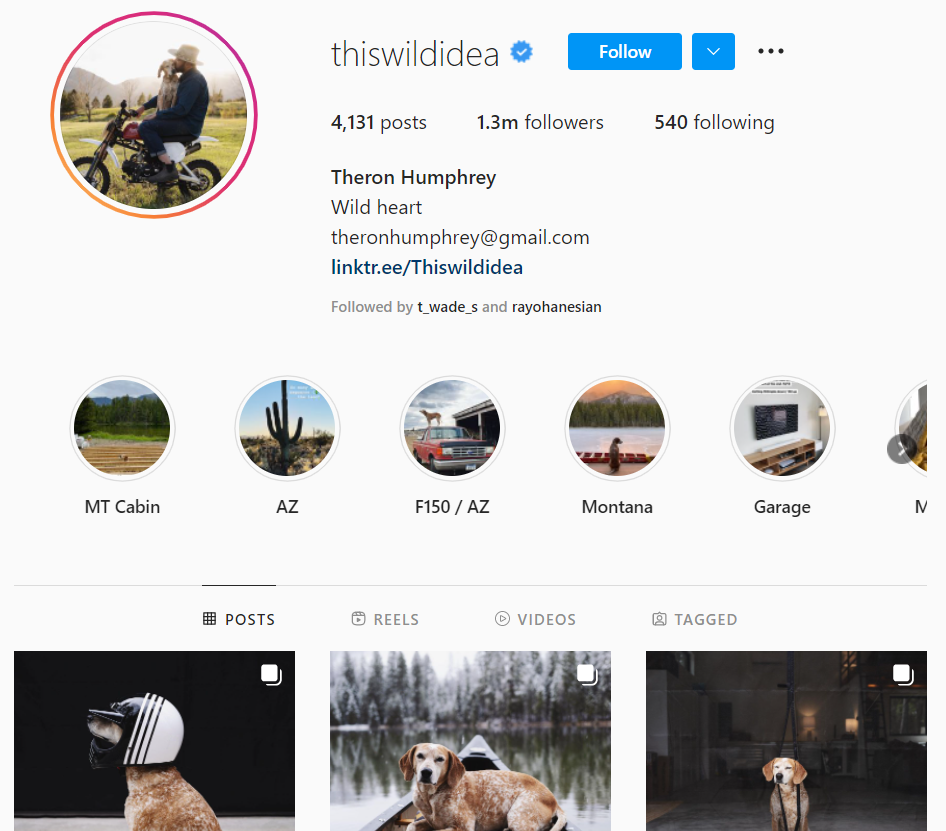
His channel is called ThisWildIdea, and this is where Theron shares his adventures in the wild with his 1.3 million followers.
Type #7: Beauty influencers
If there is one niche where a creator’s choice of products influences buying behavior the most, it is probably the beauty industry. According to a 2021 consumer survey, around three-quarters of generation Z shoppers will choose the products that their favorite influencers are using.
In terms of the content, the beauty niche is quite diverse too. Here are some of the prominent categories in it.
- Makeup tutorials where they teach different techniques for applying makeup.
- Daily skincare routines where influencers show how to take care of your skin and which products to use.
- Beauty product reviews, where they use various products and share their personal experience with their viewers.
Now let’s see who the beauty influencers are with the example of Elanna Pecherle.

Elanna runs a beauty channel on YouTube and has managed to gain the interest of 285,000 people subscribed to her. Although we can find everything from fashion to makeovers on her page, she specializes in makeup tutorials more.
Type #8: Fashion influencers
We have reached the well-dressed bunch.
The fashion influencers are always on top of the latest trends, dressing to impress and inspire. The creators in this niche draw our attention with their great look and build their massive following by showing off their wardrobes and telling us how to match colors and clothes.
To present the fashion niche, we have Emma Chamberlain and her channel.
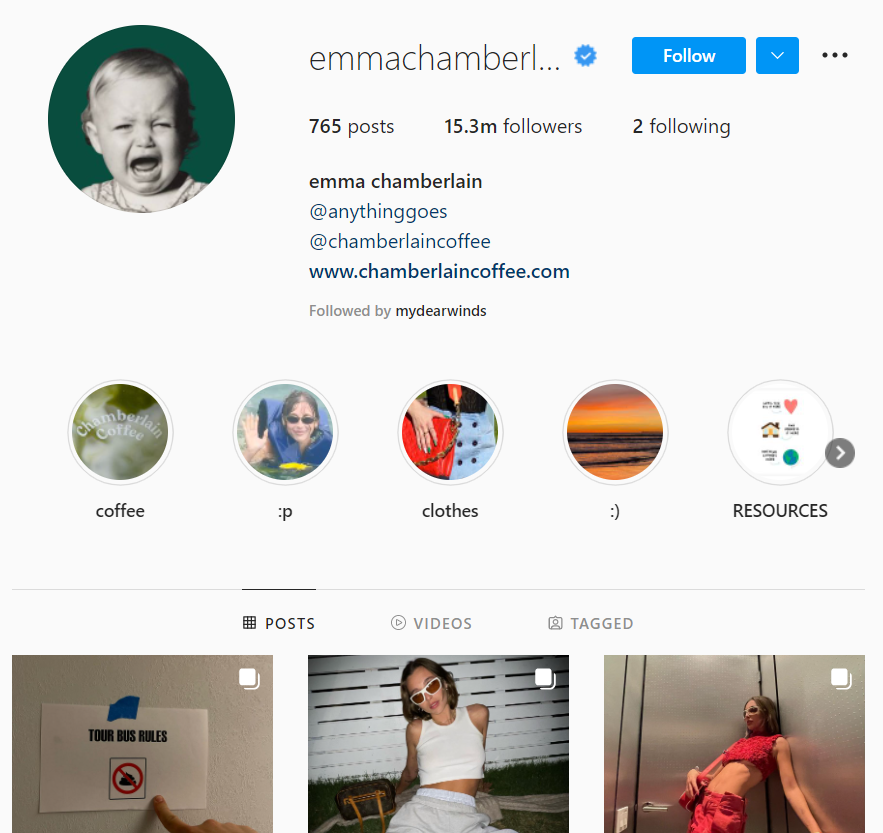
Emma is a mega influencer with more than 15 million followers on her Instagram channel. She is known for her style with the notes of vintage and casual, as well as her “don’t care” attitude in terms of picking her outfits.
Type #9: Photography influencers
Our final niche where great influencers reside is photography.
It is probably the most diverse one among the others, as we can have photographers of all kinds, including but not limited to:
- Nature photographers capture the beauty of mountains, seas, and forests.
- Urban photographers prefer the great architectural designs of modern and historic cities, as well as capturing moments of everyday life in big cities.
- Sports photographers make sure that the most memorable moments of your favorite sports game stay with you forever.
- Fashion photographers collaborate with the fashion influencers we mentioned above to bring their bold looks to everyone following them.
- Photojournalists tell compelling stories and report important facts with their photos.
There is another category – celebrity photographers, and our next hero is one of them.

Meet David Lee. His channel with 280,000 followers specializes in the entertainment industry and the people representing it – celebrities. David can boast about his photo sessions with famous people like Jaden Smith, Jon Batiste, Mike Lu, and others.
Now Over to You
As an individual or marketing agency, along with your paid ads, SEO, and content marketing, you can also consider influencer campaigns as a great way to connect with your target audience. With their trust, engagement, and reach, influencers can significantly contribute to your conversion and brand awareness goals.
If you liked our content, there is more in our blog.

Sona Kalantaryan is a senior digital marketer with a creative past. Big fan of high cinema and well-optimized landing pages. She authors guides by sharing the best practices and does it the right way!
